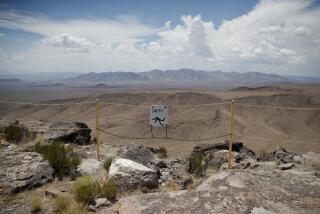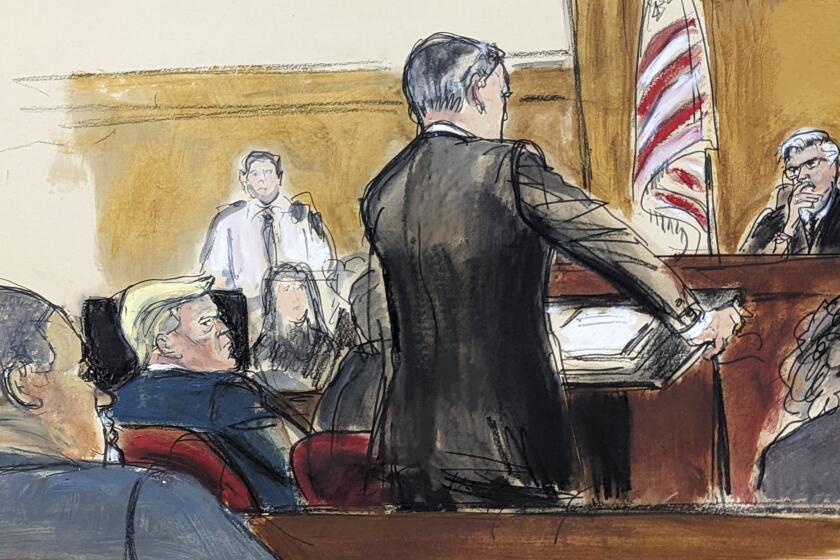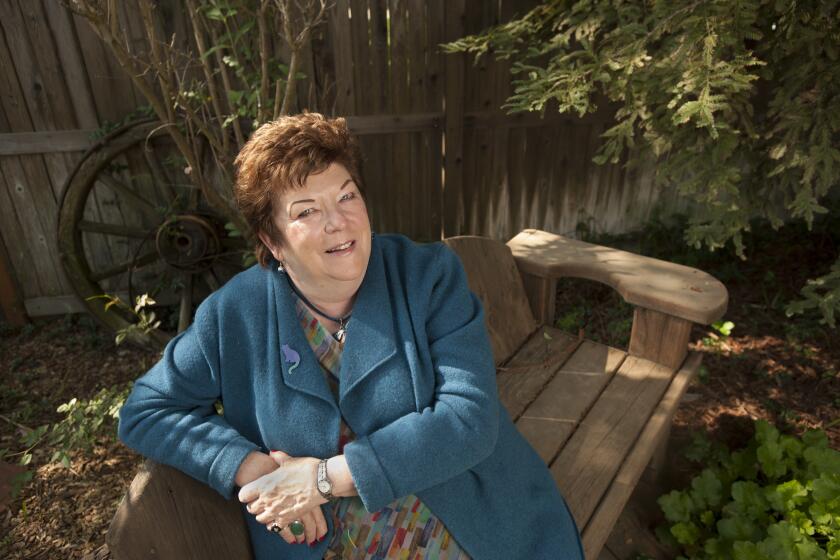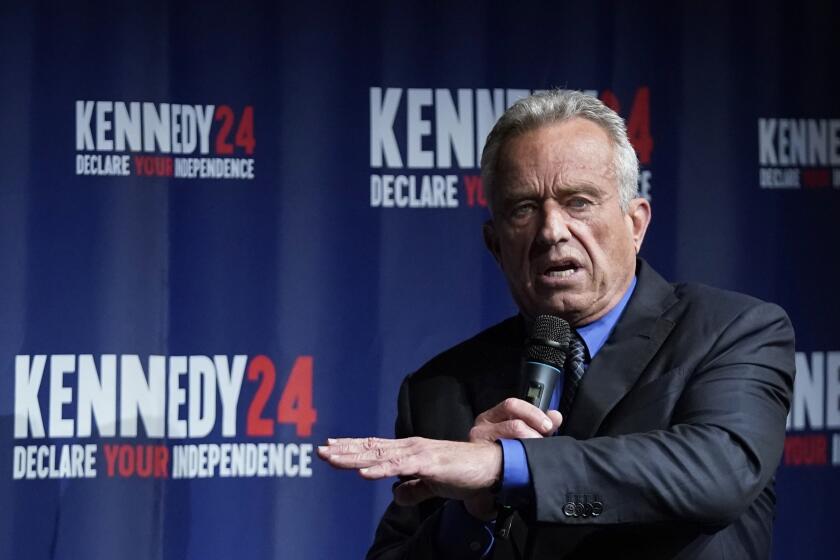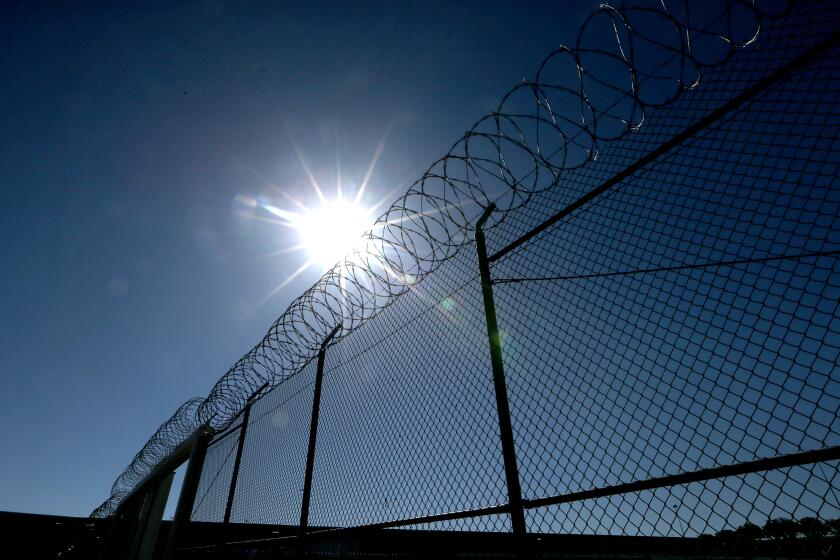A Good Divorce
Later this month in Geneva, a document will be formally presented outlining a plan for peaceful coexistence of Palestinians and Israelis in separate, adjoining states. The politicians are already sniping.
Former Israeli Prime Minister Ehud Barak called the proposal “a publicity gimmick.” Current Prime Minister Ariel Sharon demanded to know “by what right are left-wing people proposing moves that Israel can never do nor will ever do?”
There is no point at all to the hysteria that the Geneva initiative’s opponents are displaying. The initiative’s authors know very well that Sharon and his Cabinet are the legal government of Israel. They know that their plan, the fruit of two years of negotiations conducted in strict secrecy between Israeli and Palestinian citizens meeting regularly, is no more than an exercise. But at a time when the leadership on both sides was unwilling or unable to move toward constructive dialogue, an exercise seemed better than nothing.
Our goal was to present the Israeli and Palestinian peoples with a window through which they can view a different landscape, one without car bombs and suicide bombers and occupation, without oppression and expropriation, without endless war and hatred. The Geneva initiative outlines a cautious solution that addresses each of the thorny problems that have stalled past efforts.
For reasons I don’t understand, this endeavor, despite worldwide press, had received little attention in the U.S. until Friday, when Secretary of State Colin Powell cited our work as “important in helping sustain an atmosphere of hope.” It’s true our work wasn’t officially sanctioned, but it does represent the first time in the conflict that high-profile members of the civic societies of Israel and the Palestinian territories have agreed on a comprehensive settlement.
Its fundamental principle is this: Israelis end the occupation of the West Bank and Gaza and Palestinians end their war against Israel. We Israelis give up our dream of Greater Israel and they give up theirs of Greater Palestine. We surrender sovereignty in parts of the land of Israel where our hearts lie, and they do the same. The problem of the 1948 Palestinian refugees, which is really the heart of our national security predicament, is resolved comprehensively, completely, and absolutely outside the borders of the state of Israel. If this initiative is put into action, not a single Palestinian refugee camp, afflicted with despair, neglect, hatred and fanaticism, will remain in the Middle East. In our document, the Palestinian side accepts contractually, finally, and irrevocably that it does not have and will never have any future claims against Israel.
I went to the Israeli-Palestinian conference in Jordan last month for the document’s finalizing in a skeptical frame of mind. I estimated that, as so often in the past, we might succeed in drafting a joint declaration of principles about the importance of peace. Both sides would acknowledge a need to halt terror, to end the occupation and oppression, to mutually recognize each other’s rights and to live as neighbors in two states for two peoples. Israelis and Palestinians have done all that many times before, at all kinds of conferences and gatherings punctuated with handshakes and public statements. Many times in the last 10 years, our leaders have brought us within striking distance of peace, only to slide again into violence and despair.
The same old points of dispute would, I feared, trip us up again: the right of Palestinians to return and claim the property they lost in 1948 versus some other solution to the refugee problem. A return to the 1967 borders versus a logical map that takes the present into account. Explicit recognition of the national rights of the Israeli and Palestinian peoples to live each in their own country versus some equivocating platitude about “peaceful coexistence.” Explicit Palestinian assent to finally and absolutely renounce any additional future claims versus “black holes” that would permit an eventual renewal of conflict and violence.
In previous agreements, including the 1993 Oslo Accords, the two sides were very careful not to get caught in the “radioactive core” of the conflict. Refugees, the status of Jerusalem, end of the conflict, permanent borders -- all these minefields were marked off by white ribbons and their resolution put off to a better future. The Camp David conference collapsed, after all, the minute it trod on those mines. But in the end, no move toward peace can take root unless it proposes a concrete future.
On the first evening of the groundbreaking meeting in Jordan last month, the members of the two groups assembled for an opening talk. It was a few days after the murder of families at the Maxim restaurant in Haifa, a few hours after the killing of several innocent Palestinians, some of them children, in Rafah. A strange ambience pervaded the room, a mixture of resentment, suspicion and goodwill. Former Israel Defense Forces officials sat facing Palestinian guerrilla leaders.
Through the window, beyond the Dead Sea, we could see the small cluster of lights marking Kibbutz Kalia, which the Geneva document would transfer to Palestinian control. We also looked out on the large dome of lights marking Ma’aleh Adumim, the Jerusalem suburb along the road to Jericho that, according to the same document, would become an inalienable part of Israel.
There is a certain intimacy at such meetings: The Israelis and Palestinians are enemies but not strangers. We alternated between anger and back-slapping, between jabs as sharp as slivers of glass and simultaneous outbursts of laughter. (Nervous but liberating laughter was brought on by unintentional double-entendres, such as when an Israeli said “Could I detain you for a moment?” and when a Palestinian said “I’ll blow up the meeting on this point.”)
This conference was not meant to inaugurate a honeymoon between the two nations. Quite the opposite -- it was aimed at, finally, attenuating this warped intimacy. We participants were a bit like a long-married couple in a divorce attorney’s waiting room. We joked together, shouted, mocked, accused, interrupted, placed a hand on a shoulder or waist, threw invective at each other and, once or twice, even shed a tear. We have, after all, experienced 36 years of intimacy. Yes, it’s been a violent, bitter, warped intimacy, but intimacy nonetheless.
It is our two peoples alone -- not the Jordanians and not the Egyptians and certainly not the Swiss -- who know exactly what a roadblock looks like and what a car bomb sounds like and what the extremists on both sides will say about us. Since the Six-Day War in 1967, we have been as close to the Palestinians as a jailer is to the prisoner handcuffed to him. A jailer cuffing his wrist to that of a prisoner for an hour or two is a matter of routine. But a jailer who cuffs himself to his prisoner for 36 years is himself no longer a free man. The occupation has also robbed us of freedom.
Our goal, then, was to draft a fair divorce agreement. A painful, complicated divorce, but also one that unlocks the handcuffs. They will live in their home and we will live in ours. The land of Israel will no longer be a prison or a double bed. It will be a two-family house.
Still, finding the words to get us to agreement at times seemed impossible. Nabil Kassis, a former Birzeit University official and until last month the Palestinian Authority’s minister of planning, is a polite, introverted, melancholy man. He is also a tough negotiator. In Jordan, he was perhaps the only Palestinian who had no inclination to jest or trade mild jabs with the Israelis. One evening, he stopped me by the bathroom door to explain: “Try, please, to understand. For me, giving up the right of return to the cities and villages we lost in 1948 is to change my identity.” So I tried to understand. But it seemed to me that what Kassis really meant was that his identity was conditional on the eradication of my identity.
Afterward, during a discussion in the meeting room, Kassis raised his voice and demanded that the word “return” appear in the document. In exchange, he and his associates would agree to the word’s being accompanied by reservations. Avraham Burg, a religious Labor Party member of the Knesset and its former speaker, also raised his voice. He too was angry: “Let Nabil Kassis give up part of his national identity just as I, Avraham Burg, hereby relinquish no less than a part of my religious faith, inasmuch as I am prepared to agree, with a broken heart, to Palestinian sovereignty over the Temple Mount.” I spoke up, too, explaining that in the context it was being discussed, the word “return” was code for the destruction of Israel and establishing two Palestinian states on its ruins. Furthermore, I insisted, the document needed to contain explicit recognition of the Jewish people’s national right to their own country.
In the end, we drafted a document we were all proud of. But there is something it does not have. Teeth.
We poured important ideas onto more than 50 pages of paper. And if the publics on both sides accept it, they will find that the grunt work of making peace has already been done. Almost to the last detail. If Sharon and Yasser Arafat want to use this as a basis for an agreement, its authors will not insist on their copyright.
And if Sharon presents a different, better, more intricate, more patriotic plan that is also accepted by the other side? We’ll congratulate him. Even though Sharon, as everyone knows, is a weighty personage, my friends and I will bear him on our shoulders.
Translated by Haim Watzman
More to Read
Get the L.A. Times Politics newsletter
Deeply reported insights into legislation, politics and policy from Sacramento, Washington and beyond. In your inbox three times per week.
You may occasionally receive promotional content from the Los Angeles Times.
